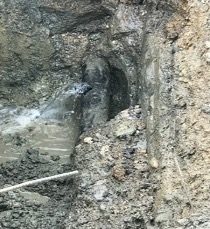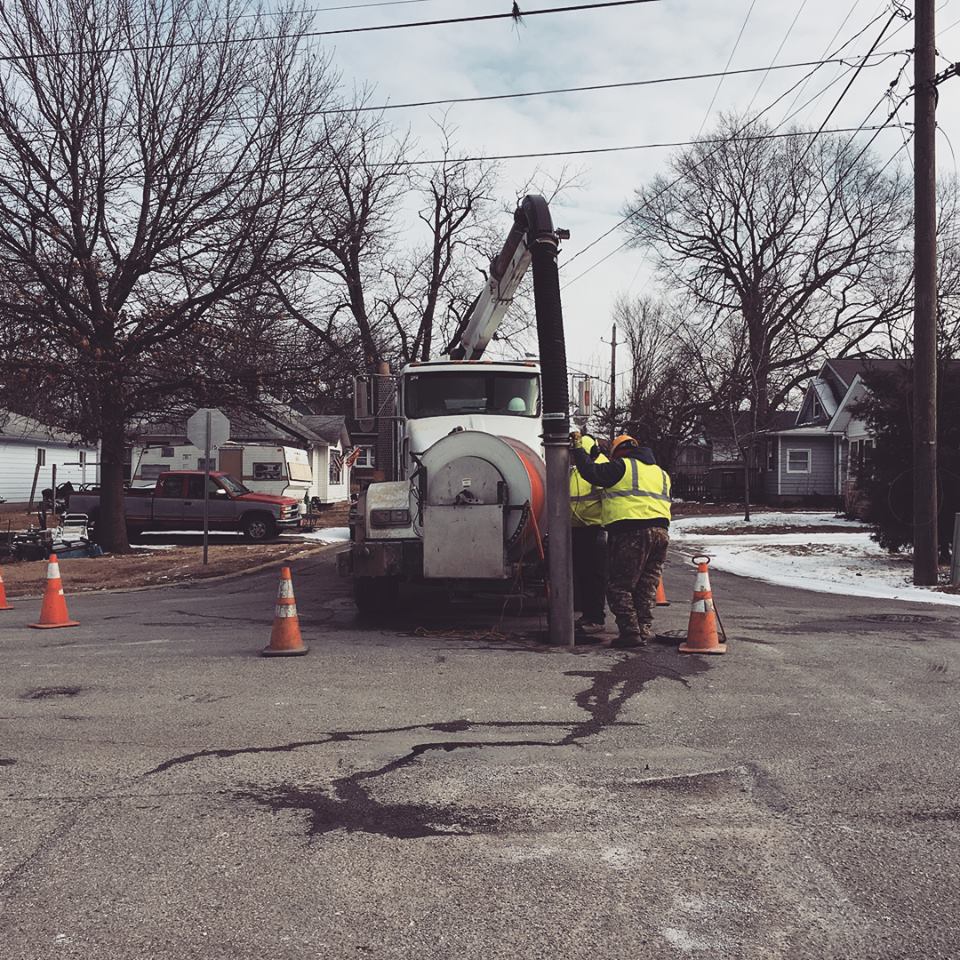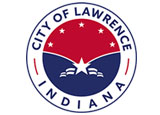- Government
- Mayor's Office
- Controller's Office
- Department of Public Works
- Legal Department
- Human Resources
- Street Department
- Stormwater Department
- Parks and Recreation
- Communications
- Mayor Mail
- Agendas & Minutes
- Financial Information
- Code of Ordinances
- Employment
- City Branding
- Video Archive
Departments
Administrative
Elected Officials
- Services
- Public Safety
- Our City
- Do Business
- How Do I...?
Make suggestions to Mayor Whitfield?
Make a public records request?
Request a Police Incident or Accident Report
File a tort claim?
Find out about trash collection?
Order or replace a trash/recycle toter?
Report a street issue or pothole?
Report a code violation?
Report a safety concern?
Pay a traffic/parking fine?
Apply for a gun permit?
Apply for a Blue Star Banner?
Pay my water/sewer bill?
Resume water service?
Lawrence Utility EPA Order Update
December 14, 2021

Because we failed to meet the obligations under the original 2008 order, we continue to be in violation of the Clean Water Act by virtue of having sanitary sewer overflows. This is due primarily to lack of adequate revenue to properly operate, maintain and invest in our sewer system. This situation further emphasizes our need to adjust our sewer rates in order to begin making improvements to address the regulatory issues under the AOC. We must also be able to properly operate and maintain our sanitary sewer system for the benefit of our customers and the city as a whole. Failure to address these issues will severely curtail new development as well as place the city at risk for even more regulatory action, which will come at an even higher cost.
On a positive note, we are close to starting up our newly upgraded and refurbished Fort Harrison and Indian Lake water treatment plants. While we still have plenty to do to achieve substantial and final completion, we are close to having these plant improvements completed. This will complete one of our primary goals of replacing and/or renovating all of our water treatment facilities. Once we complete the 52nd Street elevated storage tank in 2022, we will have addressed all our water treatment and storage facilities as well as completed significant improvements in our well fields and with our SCADA system. Since September of 2017, the Utility has completed upwards of $30-million in much-needed water system improvements, with more on the way! In 2022, look for water main replacement projects on:
- 46th Street from Franklin to Shadeland Avenue
- Franklin Road from Records Street to 56th Street (except for the area between 47th and 45th, which was completed in 2019-2020)
- Richardt Street from 46th to 56th streets
- McGuire Court
- Hermosa/Fall Creek Drive (already under construction)
These projects have started, with the first street being Hermosa Drive due to a rash of additional main breaks in that area in late summer 2021. The contractor has indicated that from there, they will be mobilizing to Franklin Road next. This project will take at least a year to complete:
- Maple Lane from Pendleton Pike south to city limits
- Zoeller Avenue from 46th south to dead end
- Wallingwood Drive from 56th Street to Boy Scout Road
The projects above were to have started in July-August of 2021 but like many businesses these days, our contractor experienced delays in getting parts and materials for the project and had to delay. Then, when they were ready to get going again in October, they experienced covid exposures on their water construction crews and they had to quarantine and this cause them to have to reschedule a lot of their work and made it so that they would not be able to start here in Lawrence until November 29th. We discussed this internally and decided that it would be best to wait until spring 2022 so they could get in, get started and stay on the job until it is done, which should be about 6 months, maybe a bit longer.
The 52nd Street Elevated Storage Tank at 52nd and Pendleton Pike is already out to bid and we will award that project in early 2022, but the work will not be done until the fall of 2022. This is because we want all the work to be completed at our Fort Harrison and Indian Lake Water Treatment Plants to be fully completed before we take this tank off-line for the planned work. The interior of this tank will be repaired and recoated and there will also be structural and safety improvements made to the tank. The outside of the tank will be cleaned and touched up, and the outside of the Oaklandon Water Tower will be cleaned as well under this project.

We have also started our 2021 residential water meter replacement project. Our contractor, NECO, will complete the project in early 2022. The meter replacement program ensures that we have a high level of accuracy in meter reading with no estimated readings and greater efficiency in meter reading tasks.
Now we must give the same attention to our sanitary sewer system. Had the pandemic not intervened, we would have been in front of the Utility Services Board and City Council with a proposed sewer rate increase back in mid-2020, but we felt it would not have been the right thing to do given the pandemic circumstances. Consequently, we are behind where we intended to be. Nevertheless, we must move forward now to address several key issues facing our sewer utility. These are:
- Sanitary Sewer Overflows, which are illegal under the Clean Water Act and the basis for our regulatory action from EPA. The new order is very clear on the need to eliminate these events from our system.
- Aged and deteriorated sanitary sewer infrastructure in the older parts of the city. These conditions contribute significant amounts of rain and ground water into our sanitary sewer systems, which take up capacity intended for sewage and result in poor system performance, surcharging and overflows. They also negatively affect new development. To understand the magnitude of the problem, note that our water utility provides roughly 3.5 million gallons per day in metered water to customers (2020 data), but we send 5.74 million gallons of water, on average (2020 data) to the sewage treatment plant. This is a difference of 2.24 million gallons per day of clear water! This water does not require treatment and yet we are paying to do so!
- Annual sewage treatment cost increases passed along to us from CEG. These increases will be coming each year through 2025. For 2026 through 2029, we will incur any increases approved by the IURC for CEG during the period 2019-2025.
- Staffing shortages in the sewer utility.
- Inadequate revenues due to no rate adjustments since 2009, which resulted in less and less money being available to make improvements to our system so as to address the overflows, poor performance and other operational problems.



While we look forward to completing $4,100,000 worth of sanitary sewer improvements with the recently awarded SWIF Grant and matching ARP funds, projects remaining uncompleted from the original study done in response to the original EPA Order total more than $32-million. This does not include the costs to address the chronic SSO's and other work mentioned specifically in the new AOC from the EPA. However, we did in fact turn the water system around, saving it from bankruptcy and I am positive we can do the same with our sanitary sewer system!
The areas we will be focusing on with our SWIF Grant/ARPA-funded projects are areas 1, 3 & 5 on the map below.

Documents
Latest news
Subscribe for newsletters

Contact us
9001 East 59th StreetLawrence, IN 46216
Phone: (317) 545-6191
Staff Directory
Utilities: (317) 542-0511
Subscribe for newsletters

Contact us
9001 East 59th StreetLawrence, IN 46216
Phone: (317) 545-6191
Staff Directory
Utilities: (317) 542-0511








